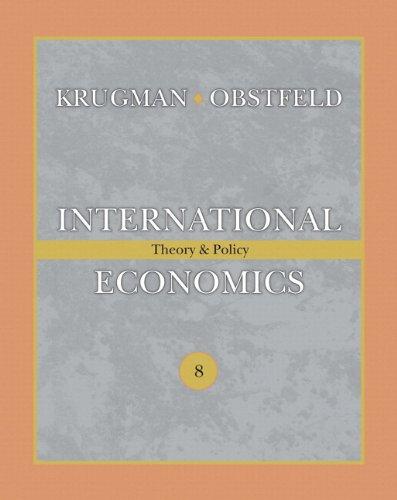The second Case Study (pp. 545) discussed the big global imbalances of the 2000s and suggested and
Question:
The second Case Study (pp. 545) discussed the big global imbalances of the 2000s and suggested and that one can analyze factors determining world real interest rates in terms of the balance between the world demand for savings (in order to finance invest- ment) and the world supply of savings (just as in a closed economy-which the world is). As a first step in formalizing such as analysis, assume there are no international dif- ferences in real interest rates due to expected real exchange rate changes. (For example, you might suppose that yours is a long-run analysis in which real exchange rates are expected to remain at their long-run levels.) As a second step, assume that a higher real interest rate reduces desired investment and raises desired saving throughout the world. Can you then devise a simple supply-demand picture of equilibrium in the world cap- ital market in which quantities (saved or invested) are on the horizontal axis and the real interest rate is on the vertical axis? In such a setting, how would an increase in world saving, defined in the usual way as an outward shift in the entire supply-of-savings schedule, affect equilibrium saving, investment, and the real interest rate? Relate your discussion to the second Case Study in the chapter and to the paper by Ben S. Bernanke in Further Reading. [For a classic exposition of a similar model, see Lloyd A. Metzler, "The Process of International Adjustment under Conditions of Full Employment: A Keynesian View," in Readings in International Economics, eds. Richard E. Caves and Harry G. Johnson (Homewood, IL: Richard D. Irwin, Inc. for the American Economic Association, 1968), pp. 465-486.]
Step by Step Answer:

International Economics Theory & Policy
ISBN: 9780138002121
8th Edition
Authors: Paul R Krugman, Maurice Obstfeld






